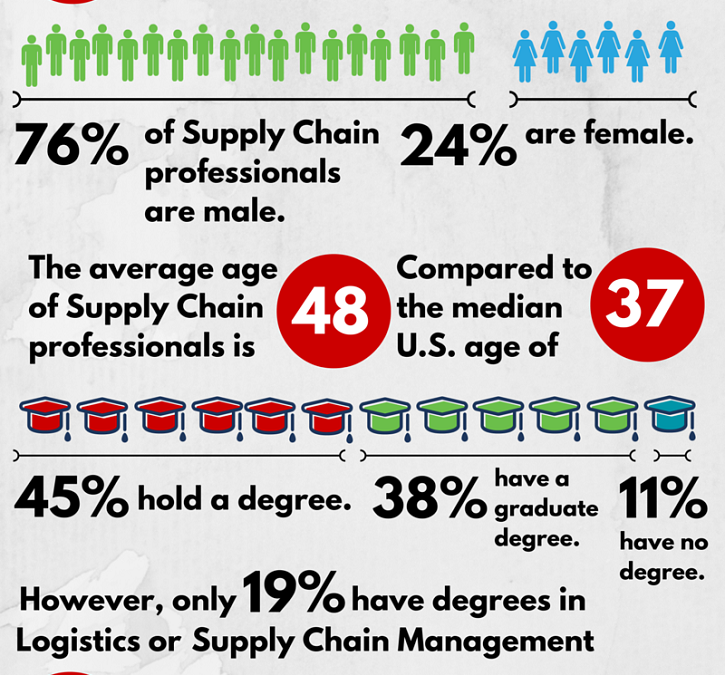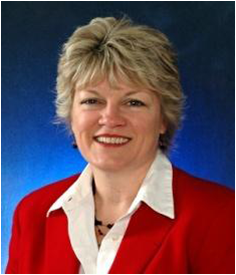
by Fronetics | Apr 19, 2017 | Blog, Logistics, Supply Chain, Talent
Looking for talent? Try recruiting from these top-rated supply chain management MBA programs and schools.
We have written before about the importance of recruiting and strengthening the relationship between academia and the supply chain industry as means to solve the growing supply chain talent gap. If your company is looking to hire, consider strengthening your rapport with schools that offer supply chain programs or specialties.
Recently U.S. News & World Report released its annual rankings, including the top supply chain and logistics MBA programs. Of course, U.S. News is not the be-all end-all. But this list gives companies in the supply chain and logistics industries an idea of where some of the brightest graduates, who will be seeking employment in the upcoming months, will be coming from.
U.S. News’ top 10 supply chain management MBA programs 2018
- Michigan State University (Broad) – East Lansing, MI
- Massachusetts Institute of Technology (Sloan) – Cambridge, MA
- Arizona State University (Carey) – Tempe, AZ
- University of Michigan—Ann Arbor (Ross) – Ann Arbor, MI
- Ohio State University (Fisher) – Columbus, OH
- Pennsylvania State University—University Park (Smeal) – University Park, PA
- Stanford University – Stanford, CA
- University of Tennessee—Knoxville (Haslam) – Knoxville, TN
- Rutgers, The State University of New Jersey—Newark and New Brunswick – Newark, NJ
- Carnegie Mellon University (Tepper) – Pittsburgh, PA
See all 23 ranked schools.
Recruiting and retaining new talent
We’ve been writing a lot lately about the supply chain talent gap and ways to recruit and retain millennials. Here are 3 must-read articles for companies looking to hire young talent this year.
3 Ways to Attract Millennial Talent for the Supply Chain
By the year 2020, millennials are estimated to make up a majority of the workforce. In addition, a 2014 study found that 46% of B2B buyers were millennials, and that number is on the rise. This seismic shift in workplace demographics calls for a new approach to attracting and retaining talent. Read
Supply chain companies want to find talented employees that can succeed in junior-level positions now but that also could move into management down the road. “Soft skills” like creativity and problem-solving are crucial to both roles — not to mention, every role in between. Liberal arts graduates bring these abilities to the workplace. Supply chain companies could be actively recruiting these qualified and eager graduates to fill open junior-level positions now, and then groom them to become future leadership. Read
Rodney Apple, founder and president of SCM Talent Group, has almost 20 years of experience as a supply chain recruiter. He has filled more than 1,000 supply chain positions ranging from executive-level at Fortune 500 companies to leadership and staff-level roles across large networks of manufacturing and distribution facilities within the United States. In this interview, Apple discusses the supply chain talent gap and advice for overcoming it. Read
Related posts:

by Fronetics | Sep 7, 2016 | Big Data, Blog, Data/Analytics, Logistics, Strategy, Supply Chain
While the temptation to invest in big data may be strong, small and mid-sized companies might be better off starting with small, more manageable analytics.
Big data has become a big business. A 2016 Forrester report forecasts that the big-data management business will grow by 12.8% by 2021. It’s easy to see why, with the prevalence of stories from brands like Wamart and Rolls Royce that have perfected the science of capitalizing on detailed insights about customer behavior.
But many organizations — particularly small to mid-sized companies — are learning that big data does not always equate to big payoffs. In fact, many organizations have sunk millions of dollars into sophisticated data-analytics software only to realize they don’t have the capabilities to interpret the new insights nor the expertise to turn them into a competitive advantage.
Big data and the supply chain
Companies within the logistics and supply chain industries aren’t immune to this trend. An Accenture survey of more than 1,000 supply chain executives found that 84% have already employed big-data analytics or are in the latter stages of planning to do so. Respondents reported:
- 17% have implemented analytics in one or more supply chain functions.
- Three out of 10 have an active initiative to implement analytics in 6-12 months.
- More than one-third (37%) were engaged in serious conversations about implementation.
The promising applications of big data and how it might “revolutionize” the supply chain are hard to ignore. Increased efficiency across the supply chain, improved forecasting, better cost control, more accurate inventory planning: the list of benefits go on and on. These could lead to a significant advantage for companies with the expertise, structure, and knowledge to collect, analyze, and draw strategy cues from large sets of raw data.
But, again, small and mid-sized companies usually aren’t well positioned to do so, unfortunately.
Instead, start small
Supply chain and logistics organizations that don’t have such capabilities — or the capital to invest in technology that can do it for them — should start small instead. Even if you eventually want to implement a big-data strategy, there is a long-term benefit to gleaning insight from small data sets in the interim.
Here are some steps for getting started:
1) Determine your goals
Consider your business objectives and how you can leverage data to further your goals. Focus on just one or two areas for improvement, and clearly articulate what kinds of data you want to collect as they relate to those objectives.
2) Identify your sources
From where will you collect your data? Analyzing numerous data sets from a variety of sources will leave your head spinning and you none the wiser. Also determine which metrics will be most helpful to you, and which you can set aside.
3) Pick your people
If your company doesn’t have in-house analytics expertise, work to attract the appropriate talent. Regardless, integration and structuring of analytic personnel positions will be a more significant factor in your success than your use of even the most advanced statistical software program.
4) Master reporting
Finally, spend some time determining how your findings should be presented. You’ll want them to be formatted in a clear, digestible manner with a clear application for how they will improve your business.
Related posts:

by Jennifer Hart Yim | Aug 24, 2016 | Blog, Manufacturing & Distribution, Strategy, Supply Chain, Talent

The Supply Chain industry is changing, while it’s becoming harder for companies to hire at the same time. These supply chain demographics provide a picture of the industry today.
This guest post comes to us from Argentus Supply Chain Recruiting, a boutique recruitment firm specializing in Supply Chain Management and Procurement.
Everyone knows the Supply Chain field is changing. Recently, one of the best Supply Chain publications out of the U.S., Supply Chain 24/7, released a report that examines the demographic trends underlying the industry. The report, titled “A Portrait of the Supply Chain Manager,” used research survey data from Peerless Research Group and APICS to present a picture of the typical individual working in Supply Chain. The survey asked a number of Supply Chain and talent-related questions, such as:
- What percentage of Supply Chain professionals received a raise last year?
- What percentage of Supply Chain managers hold a degree?
- What percentage of companies are willing to pay above-market compensation for the right people?
And more. These issues are sure to be of interest, whether you’re looking to hire in Supply Chain or just to get a holistic picture of the field. So we put together this spiffy infographic that highlights the answers to these questions and some other interesting datapoints from the report. Check out the infographic below!

We hope you found the supply chain demographics infographic informative, and we encourage you to dig into the full report for even more insights about where Supply Chain professionals stand and where the field is going. And (as always) stay tuned for more info and perspective about Supply Chain and talent from Argentus in the coming days and weeks!
Related posts:

by Fronetics | Mar 21, 2016 | Blog, Leadership, Strategy, Supply Chain
 When Arrow Electronics came across Kendrea Durr-Smith, senior leader of export control audits, training, and communications at Honeywell Aerospace, on LinkedIn, the company was impressed with what she had accomplished in her nine years there. Now Arrow’s Director of Global Trade Compliance for the last four years, Durr-Smith has led a group that is both unique and diverse, and has helped to shepherd in significant changes.
When Arrow Electronics came across Kendrea Durr-Smith, senior leader of export control audits, training, and communications at Honeywell Aerospace, on LinkedIn, the company was impressed with what she had accomplished in her nine years there. Now Arrow’s Director of Global Trade Compliance for the last four years, Durr-Smith has led a group that is both unique and diverse, and has helped to shepherd in significant changes.
Durr-Smith’s department is unique. “The majority of functional departments at Arrow are regional- or site-specific,” she says; “however, because trade compliance is global by nature, our department is global in scope.” This means that Durr-Smith’s team is diverse, and “not just in terms of gender, but also in terms of background and culture. Learning about these differences and learning how we can best work together has, at times, proven challenging, but is critical to success,” she explains.
Success is something Durr-Smith has achieved. Arrow has made significant changes in the last few years in an effort to better support the needs of customers and suppliers. Durr-Smith and her team have assumed new responsibilities with respect to trade management and compliance in order for these new efforts to be ushered in.
To support these corporate changes and her department’s new responsibilities, Durr-Smith’s department has changed. Three of the most recent hires are women. What is exciting to Durr-Smith is how these women got to where they are today.
“Two of the three women we recently hired are self-educated,” she says. “They were interested in trade compliance, and they educated themselves on the field and took steps to make a career change. This is exciting — exciting that they actively wanted to be involved in this field, and exciting that they were proactive in getting to where they are today.”
Durr-Smith’s enthusiasm for these women’s accomplishments is genuine and speaks to her general ethos. When asked what leadership advice she could provide to others, she offered the following:
“Take on new or different responsibilities whenever possible. Place individuals in different functional areas, and focus on the benefits afforded to both the company and the individuals. Also, focus on helping people grow, and focus on supporting others.”
Thinking about pursuing a career in trade management and compliance? Durr-Smith offers this advice:
“Be flexible. Be patient. Have a good sense of humor. In the field of trade management and compliance, these characteristics are essential.”

by Jennifer Hart Yim | Mar 17, 2016 | Blog, Leadership, Marketing, Social Media, Strategy, Supply Chain

Source: Library of Congress
This is a guest post written by Tania Seary, founder of Procurious. Procurious, the world’s first online social network for supply chain and procurement professionals, has acquired more than 12,000 members in less than two years.
I’m trying to use a baseball analogy here, but appreciate that my headline does have other connotations!
Another analogy might be to say that we’re “getting the flywheel spinning” here at Procurious – the world’s first online network for supply chain and procurement professionals.
Now, for those of you who aren’t familiar with the flywheel analogy, it is a metaphor created by author Jim Collins in his famous business manifesto, “From Good to Great,” to explain one of the key drivers for creating long-term success in business.
A flywheel is a heavy disk on an axle used to smooth a machine’s operation to generate momentum and maintain a constant rotational speed.
It takes much effort and persistence to get the metaphorical flywheel to move, but consistent energy in one direction over time helps build momentum and ultimately leads to a breakthrough. In the case of Procurious, as with Collins’ companies, there has been no specific event, decision, action, or lucky moment that single-handedly helped us to successfully break through the “beta” stage, to where we are today.
Over the last two years, we have remained committed to building something truly special for the procurement profession. Step by step we have stayed focused on our goal of building a very credible and content-rich community for our members.
Now with more than 12,000 members in 135 countries, Procurious has cemented its position as the secret weapon for professionals wanting to be part of the movement toward creating the new face of procurement.
Getting back to our headline analogy with baseball, I wanted to share some of the key decisions we have made along our journey to date to build Procurious.
Agreeing on the MVP
Just to confirm, we are talking about Minimum Viable Product here, not the Most Valuable Player. In the early days of designing this business, everything was up for grabs. Among a long list, we considered building a procurement news aggregator, a pure-play training repository called Procurious TV, and a procurement lifestyle magazine.
What we ended up with was a community platform that included a community feed, member profiles, discussions, eLearning, a worldwide calendar of procurement events, twice-daily blog, and private groups.
The end result was a powerful combination of career advancement, skill development, and professional networking opportunities to help propel today’s procurement professionals forward.
To have open or closed membership?
Once we had agreed on the core features and functionality of Procurious, we had a lot of heated debates over whether we should have an open or closed network. That is, should it be closed exclusively to highly pre-qualified procurement professionals, or open for the whole world to join?
Luckily my team convinced me to keep our network open… and it’s been an important part of our success story to date.
Of course, the major advantage to our members is that on Procurious, they gain access to a wide range of thought leaders and industry experts which then exposes them to diverse opinions on the hot topics in procurement.
Finding our fans
Every club, or community, needs a strong support base. We have been very fortunate to have a number of “early adopters” from around the globe support the building of the Procurious community. And, of course, we now have our “poster child” — Siddarth Sharma — who was surprised to learn he was our 10,000th member. Siddarth is representative of so many of the exciting procurement professionals around the globe — an MBA working for KPMG managing a small team of indirects buyers in India.
Securing our sponsors
Like a baseball club, we needed some big-brand sponsors to keep our operations humming. We have been fortunate to create partnerships with the profession’s leading institutes, associations, analysts, and technology companies. The Hackett Group has supported Procurious from the start, and The Institute for Supply Management (ISM) has joined the team this year. These relationships enrich Procurious in many ways and, most importantly, provide our members with access to world-leading research and resources.
Fielding a winning team
Lisa Malone, Euan Granger, and Jack Slade have been a powerhouse behind building this community, covering all the bases, and getting runs on the board.
Handling the curveballs
The biggest threat to our success is the introduction of a fierce competitor. But we are fortunate that we now have a loyal community that has been built on a substantial foundation of trust and commitment. This will be difficult to shake.
Our next biggest hurdle to success is to overcome the procurement profession’s hesitancy to create social media networks.
Despite the well-publicized benefits, we still meet procurement professionals that tell us “they don’t believe in networking” and don’t accept LinkedIn invitations from people they don’t know. We need to convince the profession of the multiple benefits of using social media, and then provide them with the skills to leverage the opportunity.
One base at a time
Our plan is to continue building Procurious based on our members’ needs, one base at a time.
We will be hosting our Big Ideas conference in London on Thursday, 21 April, for which you can register as a digital delegate on www.bigideassummit.com.
We are also currently beta-testing our new app, which can be downloaded from the Apple App store.
We are asking as many procurement professionals as possible to sign up to the network at www.procurious.com to join this new era and — as we like to say — get involved and get ahead!
Tania is the Founding Chairman of three companies specializing in the development of the procurement profession – The Faculty, The Source and Procurious.
The Faculty is recognized as one of Australia’s leading advisors on procurement development. Established twelve years ago, The Faculty works with leading organizations to transform and elevate the role of procurement, build high performance procurement teams and create professional knowledge networks.
Under Tania’s leadership, The Faculty has instigated a number of “firsts” for the procurement profession in Australia, including the development of a Procurement Executive Program through Melbourne Business School, the establishment of a Procurement Roundtable which includes many of Australia’s leading organizations, creation of an annual Chief Procurement Officer (CPO) Forum and attracting leading global procurement thought leaders to teach in Australia. She also initiated the Corporate Board for Social Procurement, which has created a foundation for leading corporations to dedicate appropriate areas of spend toward social enterprises.
Four years ago, Tania founded The Source, a specialist recruitment firm for the procurement profession. In 2013 she moved to London and founded Procurious, the world’s first online community for procurement professionals to connect, share and learn.
Tania’s fascination and commitment to procurement development started around fifteen years ago in the United States. After finishing her MBA at Pennsylvania State University, Tania became one of Alcoa’s first global commodity managers.
Prior to moving to the USA, Tania’s career was focused on marketing roles within Alcoa and Rowland in Australia, and the Walt Disney Company in the UK. Tania has an MBA and a Bachelor of Business.








